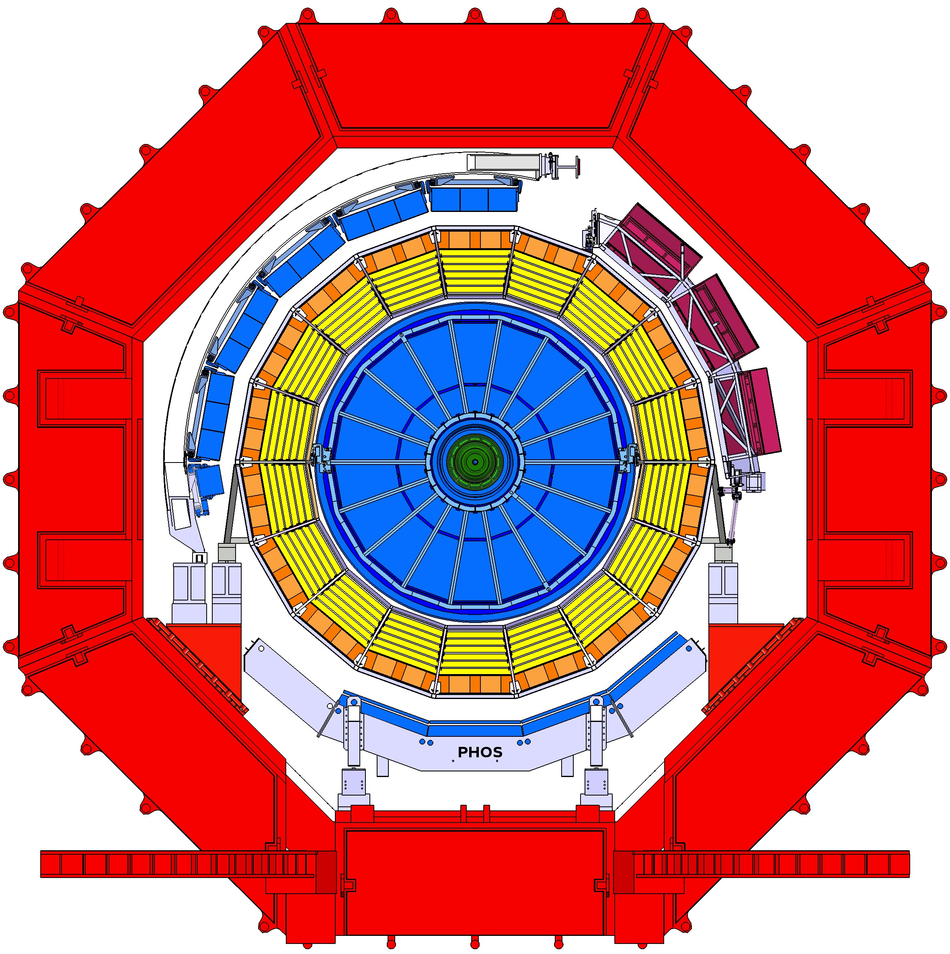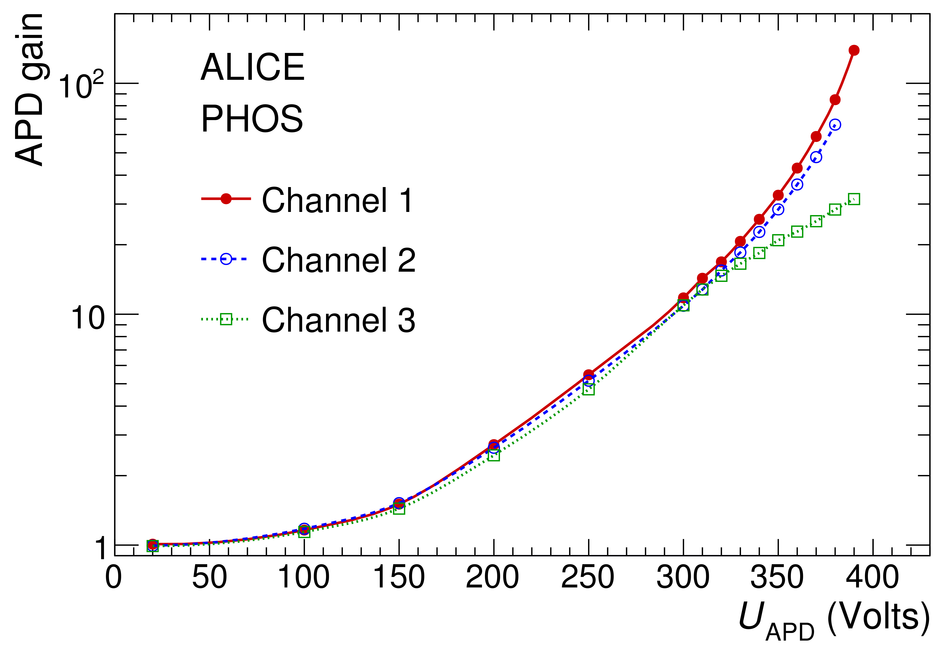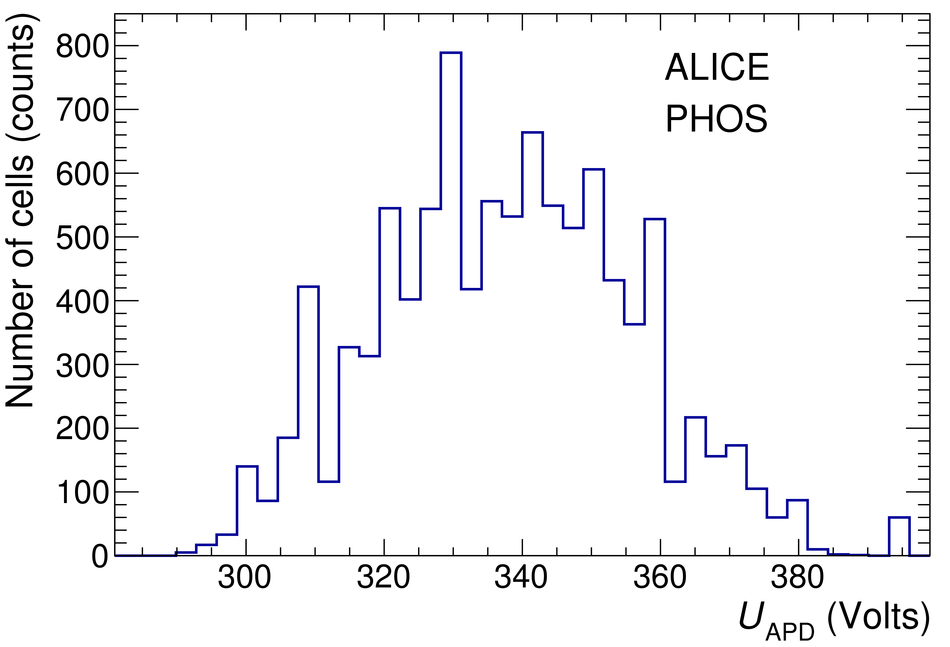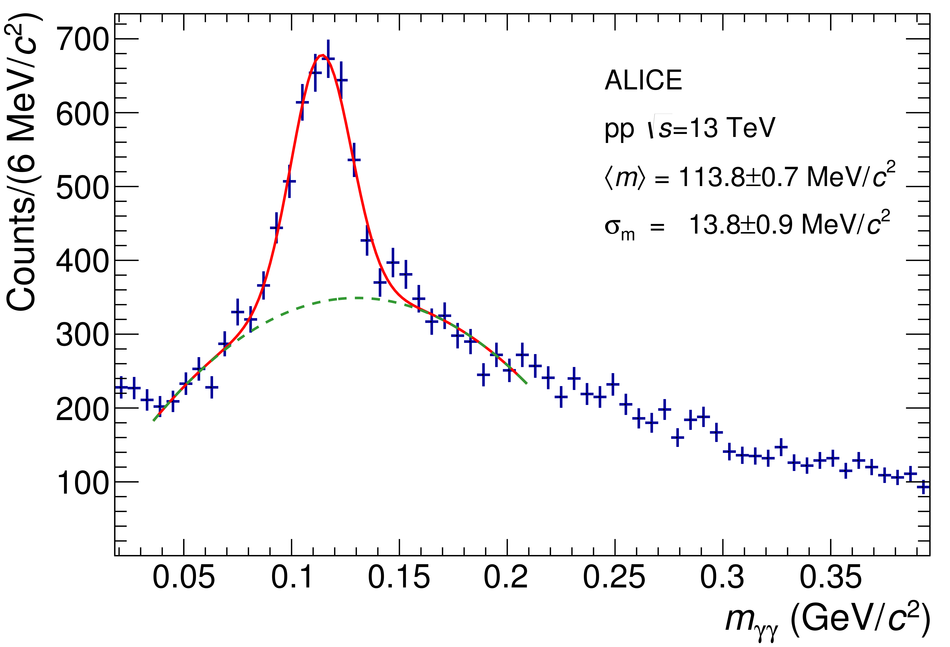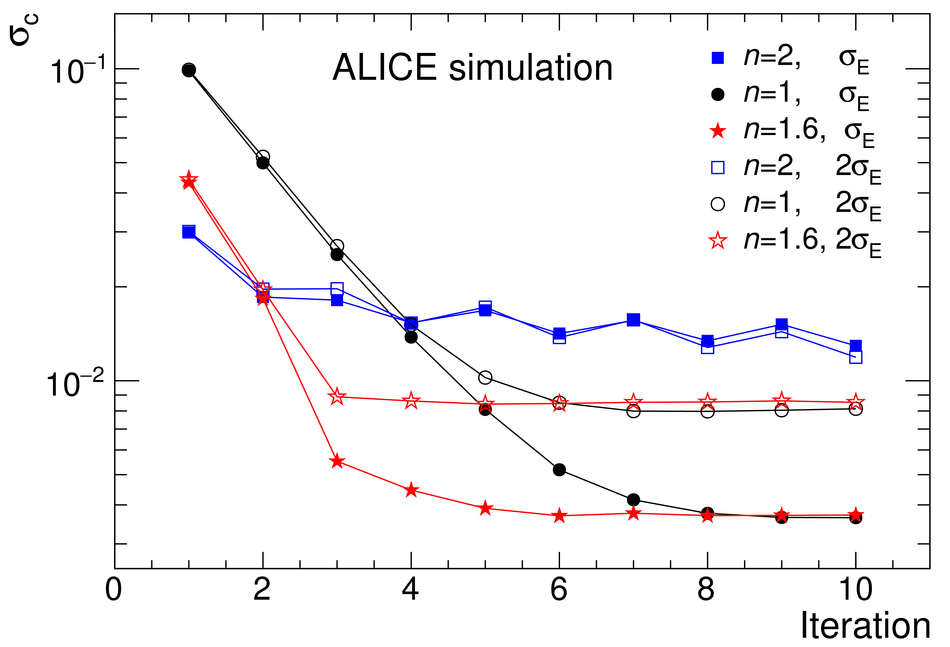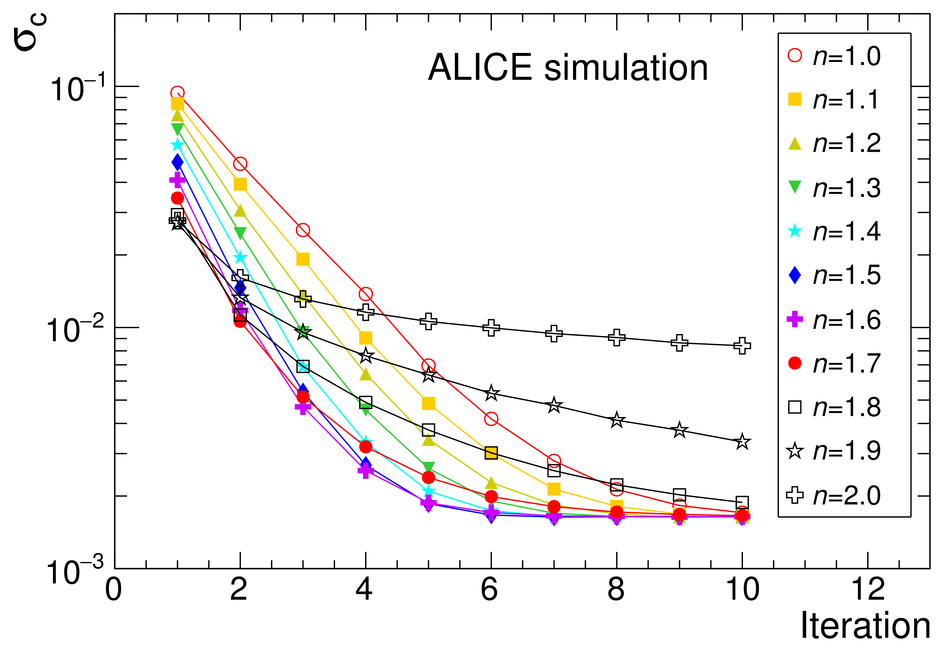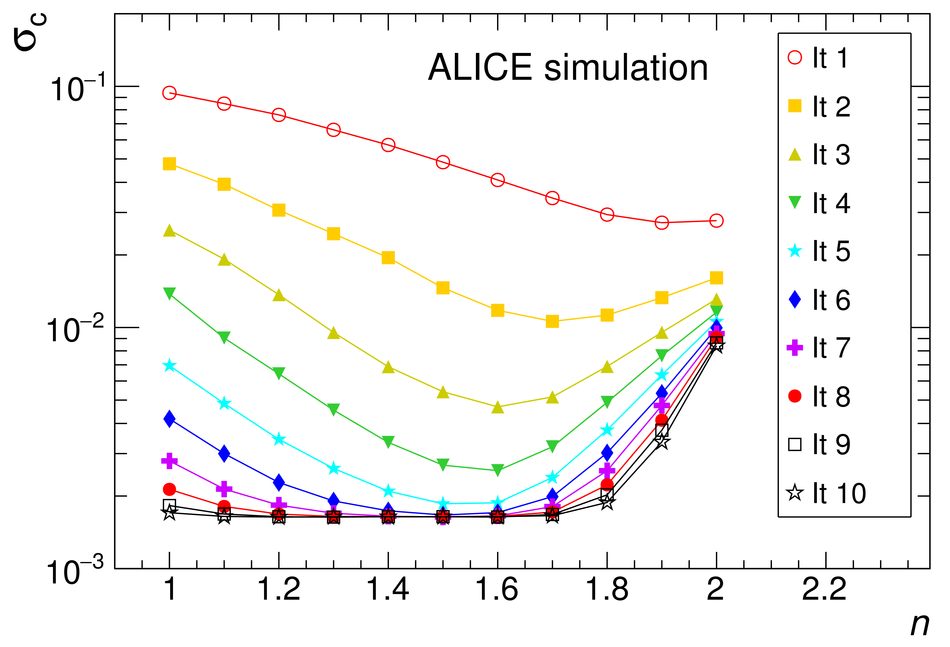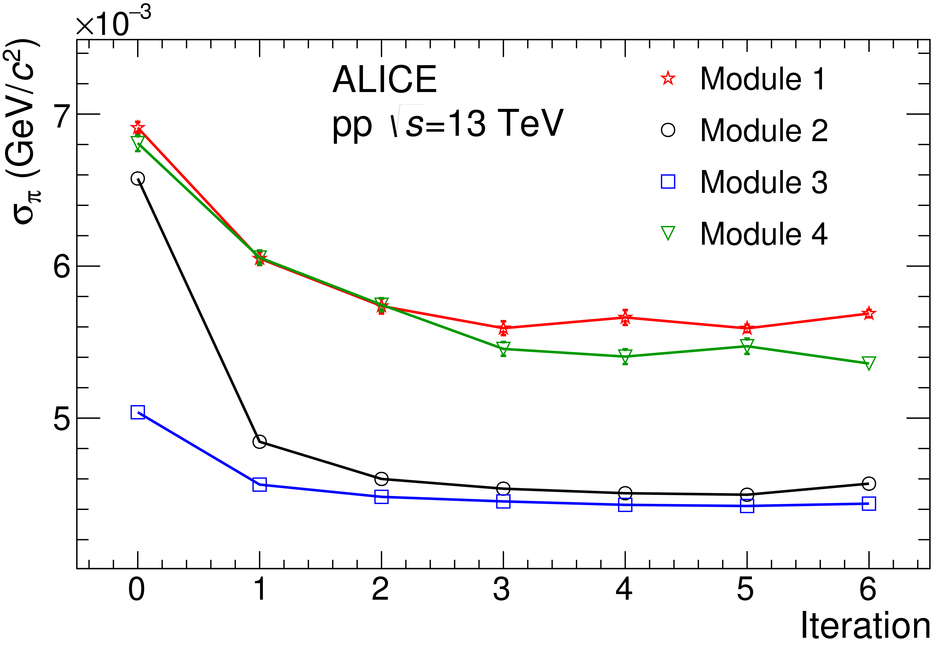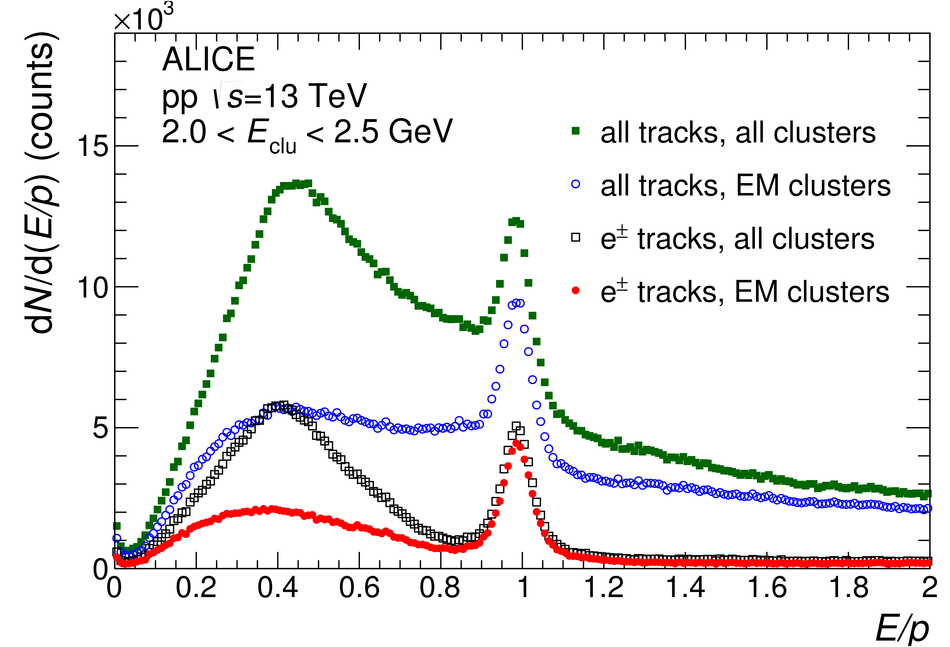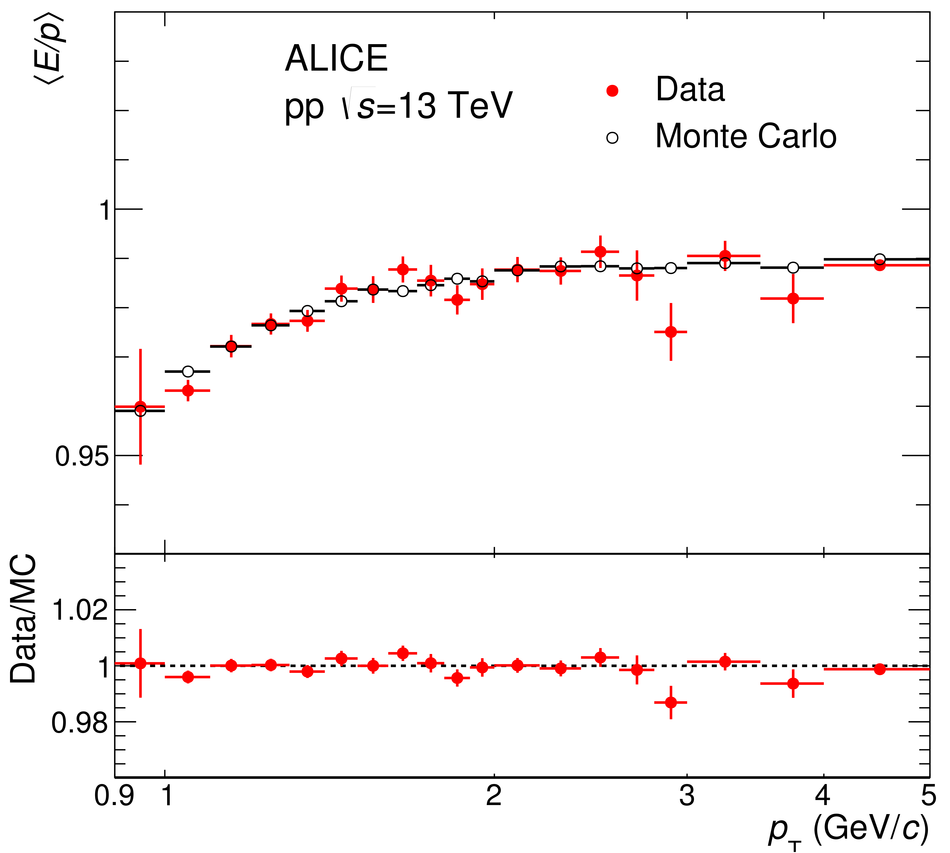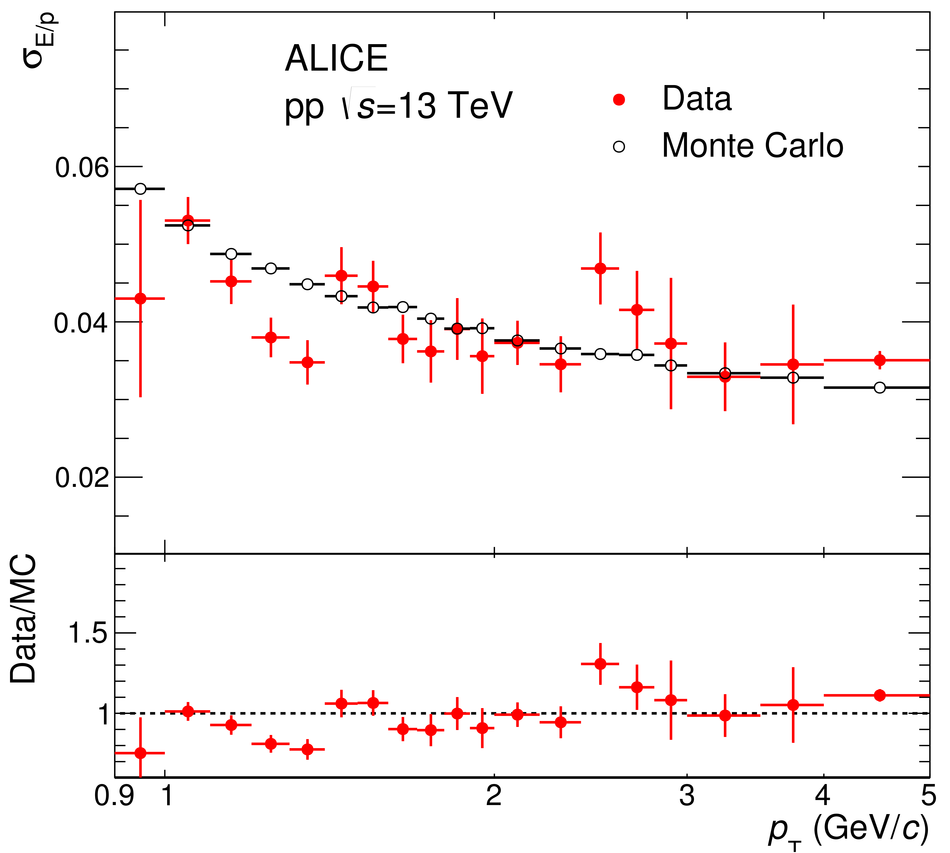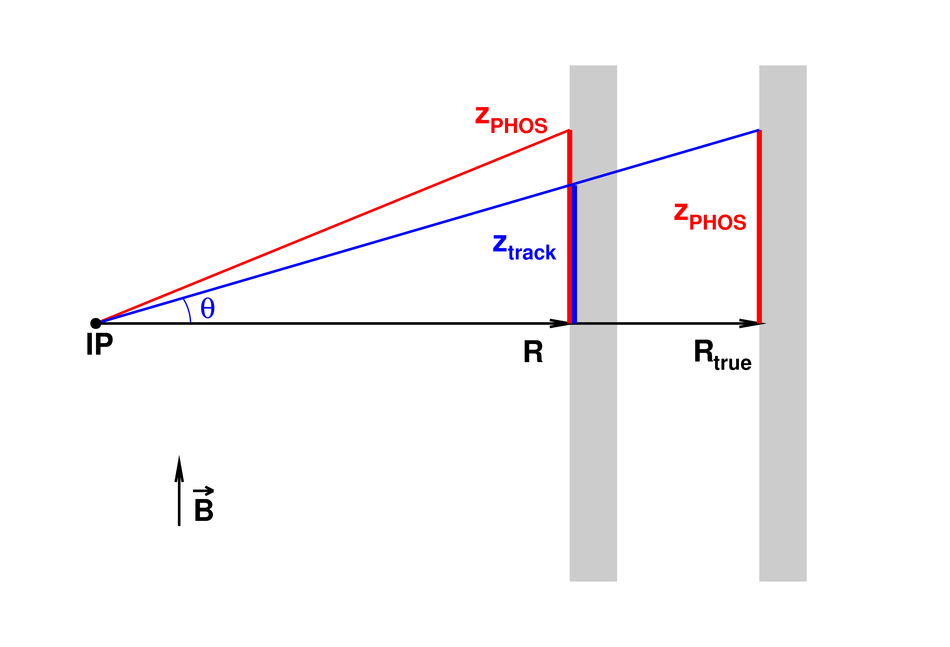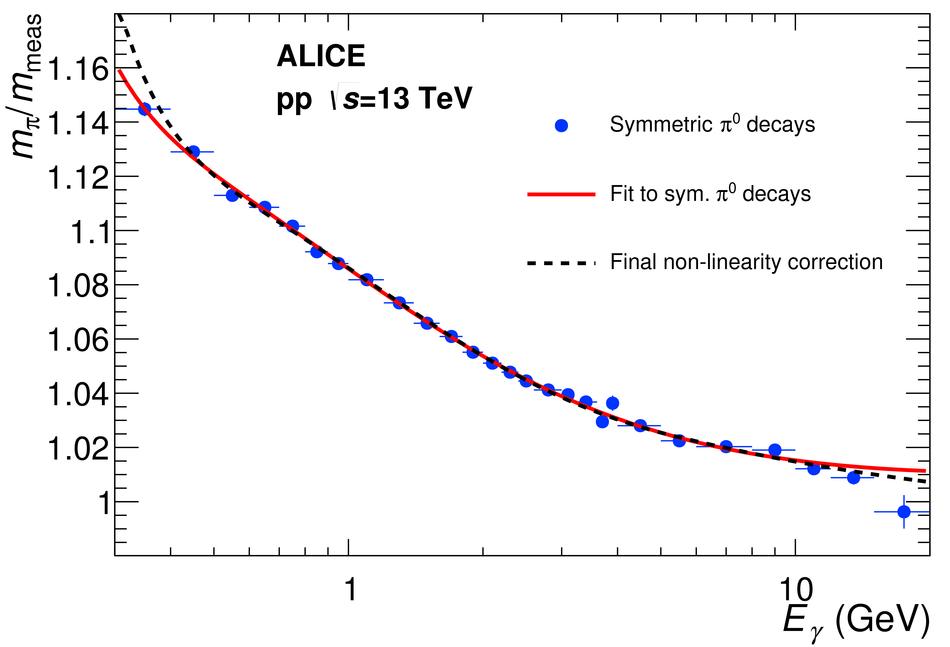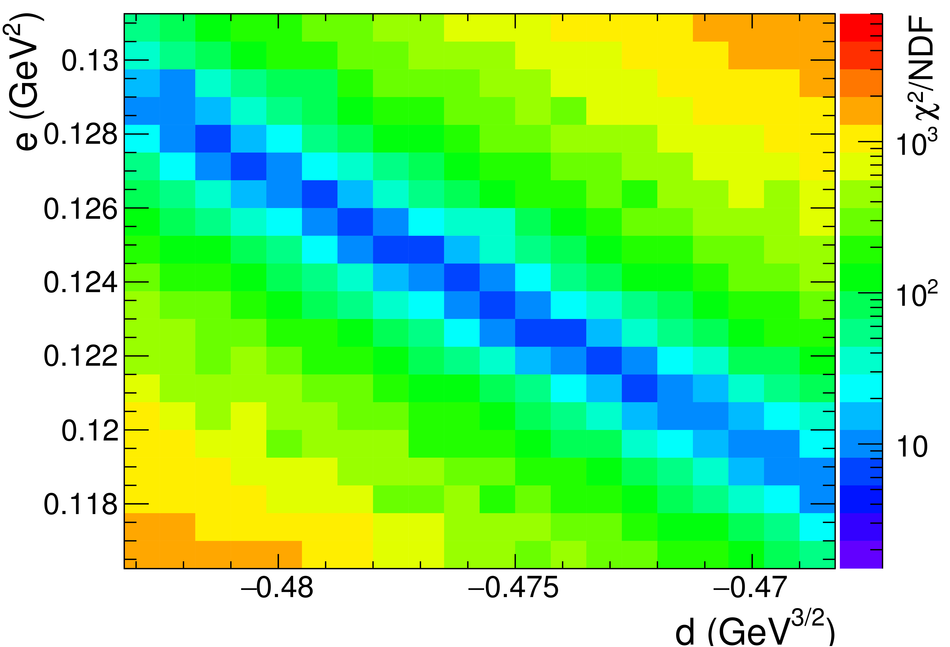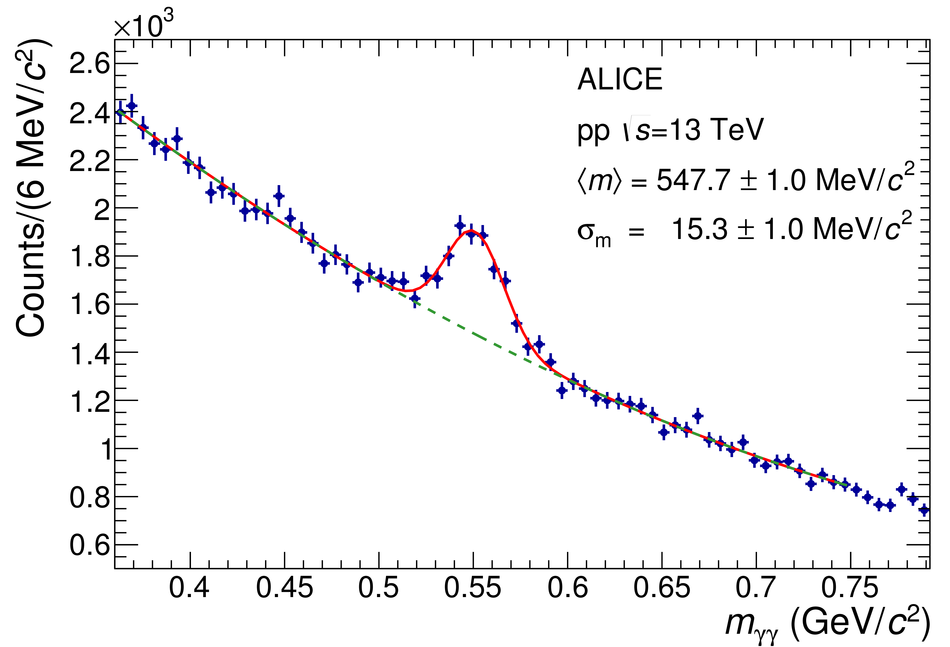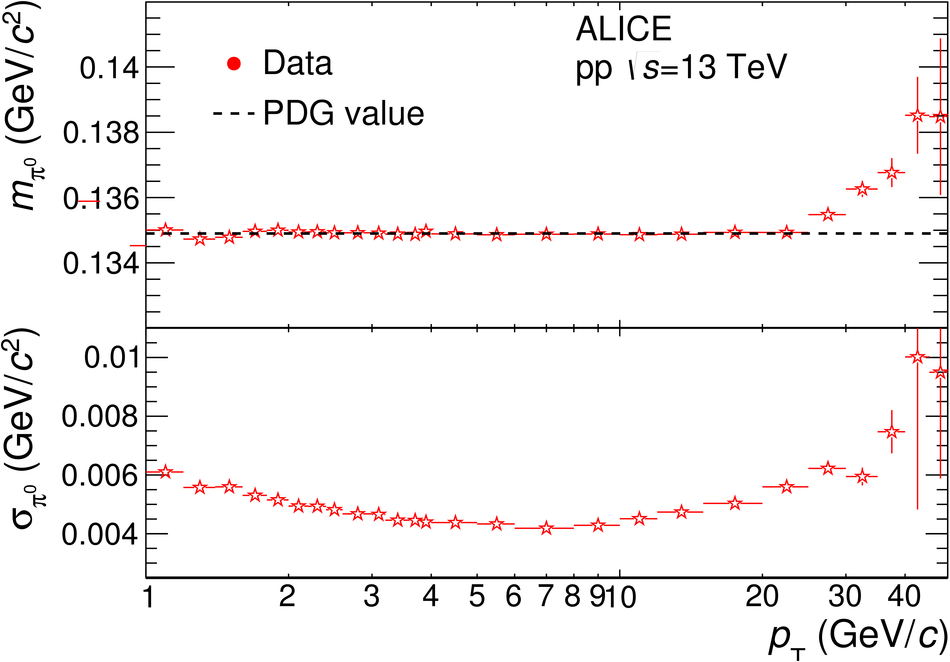The procedure for the energy calibration of the high granularity electromagnetic calorimeter PHOS of the ALICE experiment is presented. The methods used to perform the relative gain calibration, to evaluate the geometrical alignment and the corresponding correction of the absolute energy scale, to obtain the nonlinearity correction coefficients and finally, to calculate the time-dependent calibration corrections, are discussed and illustrated by the PHOS performance in proton-proton (pp) collisions at $\sqrt{s}$ = 13 TeV. After applying all corrections, the achieved mass resolutions for $\pi^0$ and $\eta$ mesons for $p_{\rm{T}} > 1.7$ GeV/$c$ are $\sigma_m^{\pi^0} = 4.56 \pm 0.03$ MeV/$c^2$ and $\sigma_m^{\eta} = 15.3 \pm 1.0$ MeV/$c^2$, respectively.
JINST 14 (2019) 05, P05025
e-Print: arXiv:1902.06145 | PDF | inSPIRE
CERN-EP-2019-020

